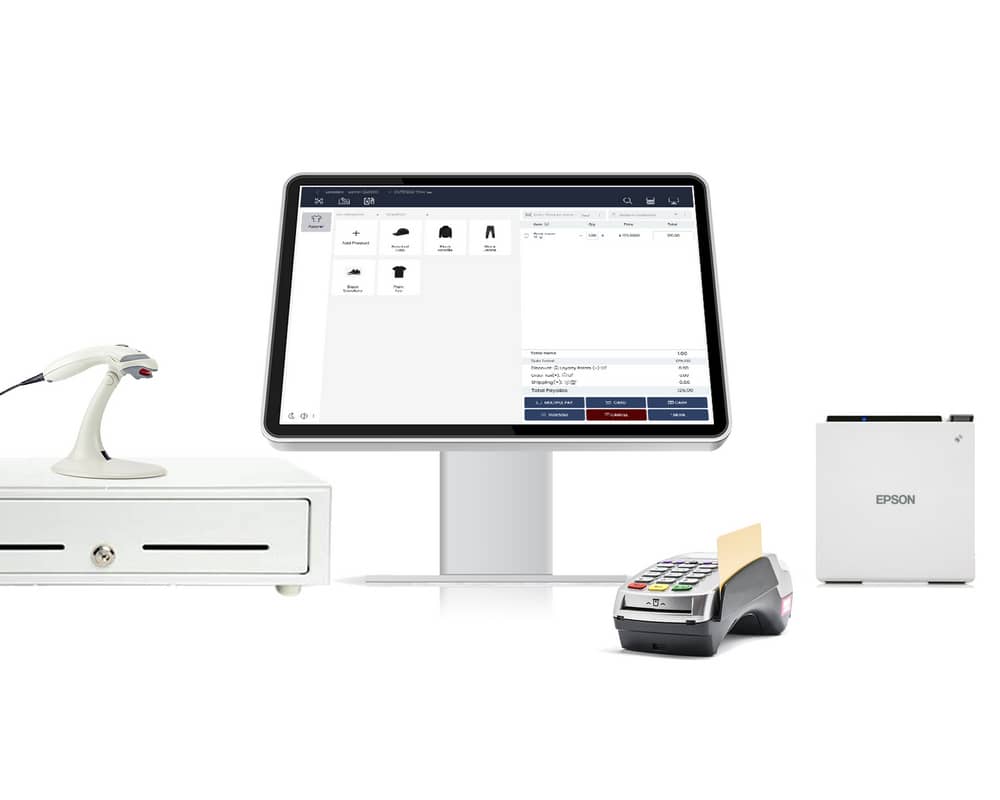Nobody is born knowing everything; as we grow, we learn; learn about the world and its things and have the freedom and access to educate ourselves about anything and any matter. So, one should not mind the term newbie since everyone starts as one. So having defined the word newbie, let’s move onto the actual matter at hand – the point-of-sale software. So, keep reading to get a summarized intro of this wonderful tool.
What is A POS (point-of-sale)?
Whenever you go shopping and proceed to the checkout counter, the place you pay for the goods, get a receipt, and have the items packed in a bag, that area is referred to as the point of sale. However, in technical terms, the software or hardware that the cashier uses to process your order, take the payment and hand over the receipt is referred to as the POS solution.
What Does a Tool like Sales Push POS Do?
So now you know what a POS is, it’s time to understand what it does? You probably know that it prints the receipt of the things you purchased. However, for the management of the store or outlet you went to, it does a whole lot more. If you look at your bill the next time, you’ll notice that it’s itemized; it will list the entire contents of your order and have tax calculations for it. That is one of the essential things for any owner because, before the advent of the modern-day POS systems like Sales Push Software, they had to manage tax calculations manually in a book; it was a hassle and a time-consuming activity. Also, the items you purchased were part of an inventory that the shop has. Since you bought the items, the point-of-sale system automatically deducts those things from its software’s stock inventory. Again this was something that used to be done manually, and often it was at the end of the day and very time-taking as well.
Are all Point-of-Sale Software the Same?
An important question by all intents, and no, not all POS software is the same. From how they are made to what tasks they do, they can differ significantly. For example, hardware-based Inventory systems come with the hardware you purchase that includes the cash register, the device to punch in the items, a specialized computer, a scanner, and the displays – both the cashier facing and customer-facing ones. Then there is Windows or Linux-based software that runs on ordinary personal desktop computers running Windows or Linux. Then we come to the latest generation; these are cloud-based systems that do not require any specialized hardware and can be run on any device with a browser and Internet access. These are the most versatile and provide ease of access besides having many other benefits – which we’ll be discussing next.
What to Look for in a POS System?
Now we come to the vital question for any newbie, what to look for in a POS system? Having mentioned the three major types, we will discuss the latest version, the cloud-based ones, since they offer more features, benefits, and ease of use. So without further ado, here is what to look for:
Itemized Billing and Inventory Management Support
The basics without a POS are incomplete: generating itemized receipts and invoices, including tax calculations and storing the data for later retrieval. Also, it needs to have inventory management functions so that you don’t have to reduce or increase quantity in a book manually.
Integration Options
Integrations and add-ons (next feature) are what made the cloud-based model so popular. This feature is a game-changer, allowing it to integrate with websites to allow cashiers to handle orders from the same interface they handle walk-in customers. Plus, the ability of the POS software to integrate with systems like MailChimp – a bulk emailing solution to help you with your email marketing campaigns and promotions is an invaluable tool in the age of digital marketing
Add-On Facility to Increase Functionality
Through add-ons, you can have the POS system take care of things or processes which it was not initially intended for. Such as having an HRM add-on to manage attendance, leaves and calculate the payroll. Other dedicated HRM systems are expensive as compares to add-on options.
Extensive Report Generating Features
Do not go for it if a POS system does not have reporting features no matter how affordable it is or what other features it might have. Reports are essential to know how your business is performing and allow you to make informed decisions to increase your profitability.
We hope after this, you will be relatively informed about POS systems, hold your own in a discussion and not consider yourself a newbie. There are lots of good options out there; take your time, learn and then decide.


